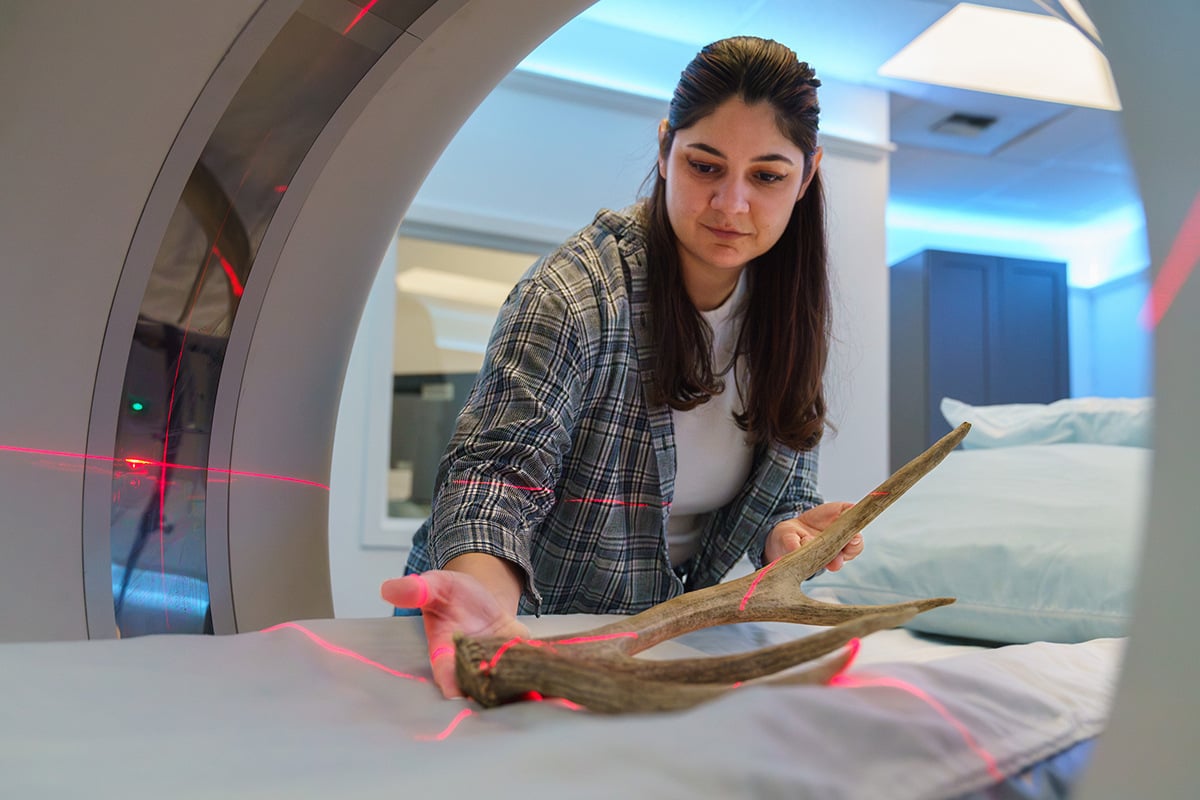We are R1 – UM Celebrates Top Research Status

So, what does it mean to be an R1 university? In the most straightforward terms, it means that we’re at the forefront of research and innovation in the nation with extensive field investigations, laboratory rigor and award-winning faculty. But in a broader sense, it represents a remarkable advantage for undergraduate and graduate students to obtain more funding and extensive research opportunities.
Scroll on to learn more about what our R1 distinction means for the University and how students are the primary benefactors of this sought-after designation:
What is an R1 University?

An R1 University, also classified as “Doctoral Universities: Very High Research Activity,” is a designation awarded by Carnegie based on research spending, staff capabilities and the number of doctorates awarded. Achieving this designation cements UM’s role as a leading research university in not just STEM but several other social sciences and other research-related fields.
Some other notable R1 universities include Yale, Vanderbilt, Stanford, Princeton, Harvard, Johns Hopkins, Georgetown, Cornell and Columbia. But none of these “prestigious” universities do R1 the Montana Way – with a determined nature, a hardworking mantra and a dash of Rocky Mountain grit.
What Are the Requirements for a University to be R1?
Several factors are considered before a university receives R1 status, although the top two requirements are:
- Colleges that spend at least $50 million in research and development.
- UM spent over $122 million in 2021.
- Awarded over 70 or more research doctorate degrees.
The R1 status lasts five years, after which new criteria may be required to continue with the status. UM will be up for re-classification in 2027 and expects to surpass all requirements.
How Many Universities in the US are R1?
Of the roughly 4,000 degree-granting Universities in the U.S., only 146 have received R1 status. That’s less than 4% of all universities in the nation, giving credence to the unique privilege of carrying the distinction. This draws from private, public and pricey colleges and universities nationwide, including several Ivy League schools.
What R1 Means for Students at the University of Montana

The R1 status and our relatively small class sizes (compared to Yale, Harvard, etc.) are a winning combination for undergraduate and graduate students at UM. That’s because all the extra attention and funding from the designation go directly toward student opportunities. After attending our R1, you’ll leave with expert knowledge, and perhaps more importantly, several hands-on experiences with research in your field.
For graduate students, R1 at UM means you’ll receive some of the best education in research and innovation. Our R1 status alone translates to more job opportunities and recognition upon graduating. The status also ensures a broader list of doctoral degrees and adequate funding for your program.
Undergraduate students equally benefit from our R1 status. Several UM programs in research and science rely on undergraduate lab work and other opportunities that more crowded colleges can’t provide. This means an undergraduate from UM graduates with more practical, resume-building experience than undergraduates from other R1 universities.
What R1 Means for Faculty at the University of Montana
Achieving R1 status helps the University attract and retain leading faculty within their fields. Earning the R1 designation also aids UM in obtaining funding and facilities for the top-tier and impactful research defined by the status. Take the researchers in UM’s Center for Translational Medicine, for example, who were awarded $2.5 million in funding from the National Institutes of Health to identify and advance a COVID-19 vaccine candidate.
Examples of R1 Research at the University of Montana

Our research expands beyond labs and medicine. UM researchers are at the forefront of improving climate, wildlife, forest management and the natural world. Faculty in the College of Humanities & Sciences also represent the prestigious status, expanding public knowledge about history, anthropology, racial justice, Native American studies and other humanities offerings that define the bedrock of our institution.
Check out some of these latest UM research achievements:
- UM Research Discovers New Way to Generate Human Cartilage
- Two UM Researchers Earn Prestigious Early College NSF Awards
- $4M Award Funds UM Biomedical Entrepreneurship and Innovation Hub
- UM Bio Station Receives $6.6 Million EPA Grant to Fight Pesticide Pollution
- UM Leads 12.3M Contract to Advance TB Vaccine
- UM Researchers Prep Fentanyl, Heroin Vaccines for Human Trials
- ‘Fighting Like a Mother’: UM Neuroscience Hunts Cure for Young Boy
We Are R1 – And You Are Too
That’s because when you bring your passions and interests to UM, you become part of the R1 community. While the generous work of our faculty and staff within UM's Office of Research and Creative Scholarship has done much of the heavy lifting to achieve R1, it’s you, yes you, that translates R1 into real-world outcomes.





